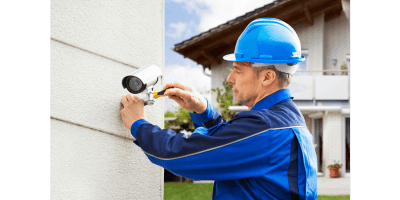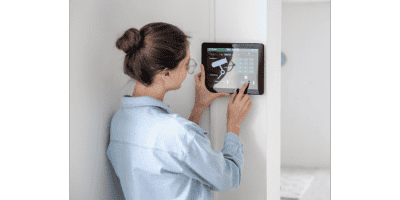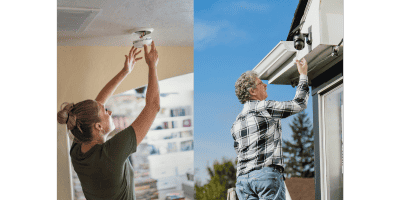Protecting your home goes beyond just installing a security system – it’s about adopting a mindset of home security. One major threat to home security is burglaries, especially with over $39 billion worth of items stolen from homes in 2021 in the U.S., and understanding the motivations and methods of burglars is crucial for effective protection. By starting with simple habits like locking doors and windows, you can significantly enhance your home’s security. Conducting a thorough home security assessment will identify vulnerabilities and provide ways to strengthen your security measures.




Understanding the Motivations and Methods of Burglars
Introduction to the motivations and methods of burglars
When it comes to home security, it’s essential to understand the motivations and methods of burglars. By gaining insight into why burglars target certain homes and how they go about carrying out their crimes, we can better protect ourselves and our properties. Understanding the mindset of burglars allows us to identify potential vulnerabilities and take proactive measures to enhance our home security.The importance of understanding burglars for home security
Threats to home security come in various forms, including burglaries. By delving into the motivations and methods of burglars, we can gain valuable knowledge that can ultimately help us protect our homes and loved ones. Developing an understanding of what burglars look for in a target and how they exploit weaknesses in our security measures can empower us to take the necessary precautions and make informed decisions when it comes to our home security.Basic Home Security Habits
Locking doors and windows as a fundamental habit
Locking doors and windows is one of the most basic yet crucial habits in home security. It may seem obvious, but many burglaries occur because homeowners forget to lock up before leaving their homes or going to bed. By making it a habit to check and double-check that all doors and windows are securely locked, you significantly decrease the chances of a burglar gaining easy access to your home.The importance of closing blinds and curtains
Closing blinds and curtains is another simple yet effective habit that can enhance your home security. When burglars are scouting for potential targets, they often look for signs of vulnerability, such as open curtains that allow them to see into your home. By closing blinds and curtains, you deny them the opportunity to assess the layout of your home and potentially identify valuable items or reasons to break in.The significance of well-maintained exteriors and lawns
Taking care of your home’s exterior appearance can also be a deterrent for burglars. A well-maintained lawn and exterior suggest that the property is cared for and likely occupied. Burglars often prefer properties that appear neglected or unoccupied, making them easier targets. By regularly maintaining your yard, mowing the lawn, and keeping up with landscaping, you create the impression that your home is well-looked after, reducing the risk of it being targeted.Creating the illusion of occupancy when away
When you’re away from home, it’s important to create the illusion that your property is still occupied. Burglars are more likely to target homes that they believe to be empty. Simple strategies like using timers to turn lights on and off at different times, leaving a car in the driveway, or having a neighbor collect your mail can all contribute to making your home appear occupied. These measures can make burglars think twice about targeting your property, as the risk of encountering occupants increases.
Home Security Assessment
Conducting a thorough assessment of the home
Conducting a thorough assessment of your home is an essential step in improving your overall security. This process involves systematically checking the different areas of your property to identify vulnerabilities and weak points. By critically evaluating your home’s security measures from an outsider’s perspective, you can pinpoint areas that may be attractive to burglars or areas where your security could be enhanced.Identifying vulnerabilities and weak points
During the home security assessment, it’s important to identify vulnerabilities and weak points that could be exploited by burglars. For example, windows and doors that are old or in disrepair may be easier to breach than newer, sturdier ones. Additionally, areas with limited lighting or overgrown foliage near entry points may provide cover for burglars. By recognizing these weaknesses, you can prioritize improvements and make targeted enhancements to your security measures.Analyzing possible entry points for burglars
As part of the home security assessment, it’s crucial to analyze possible entry points that burglars may exploit. This includes examining windows, doors, and any other potential access points around your property. By evaluating these areas, you can determine whether additional security measures, such as reinforced locks or sensor systems, are necessary to strengthen your defenses against unauthorized entry.Improving security based on assessment findings
Once you have completed your home security assessment and identified vulnerabilities and weak points, it’s time to take action and make necessary improvements. This could involve installing security cameras, upgrading door and window locks, adding motion sensor lighting, or implementing other measures based on your specific assessment findings. By addressing these areas of concern, you will enhance the overall security of your home and reduce the likelihood of a successful burglary.Types of Alarm Systems
Overview of alarm systems for home security
Alarm systems are an integral part of home security, serving as a valuable deterrent against burglars. These systems function by alerting homeowners and authorities to potential intrusions, thereby increasing the chances of catching the culprits or preventing the crime altogether. Alarm systems can come in various forms and offer a range of features to meet the unique needs of different households.Exploring different types of alarm systems
When it comes to alarm systems, there are several options to consider. Traditional wired alarm systems rely on physical connections between the various components, while wireless systems utilize radio frequencies to transmit signals. Furthermore, there are self-monitored systems that allow homeowners to monitor their own security, and there are professionally monitored systems that involve a third-party service monitoring your home’s security 24/7.Understanding the features and benefits of motion sensors
Motion sensors are a common feature of alarm systems that detect movement within specific areas of your property. These sensors are designed to trigger an alarm or signal when they detect unauthorized activity, such as an intruder entering your home. Not only do they act as a deterrent for potential burglars, but they can also provide an early warning system to alert you of any suspicious activity around your property.Importance of door/window sensors in home security
Door and window sensors are another crucial component of alarm systems. These sensors help detect unauthorized entry by triggering an alarm when a door or window is opened or tampered with. By installing these sensors on all accessible doors and windows, you create an additional layer of security and can receive immediate notifications in case of a potential breach.The role of security cameras in deterring burglars
Security cameras serve as both a deterrent and a tool for gathering evidence in the event of a burglary. Visible cameras can dissuade potential burglars from targeting your home, as the risk of being caught on camera increases. Furthermore, if a burglary does occur, having video footage can greatly assist law enforcement in identifying the perpetrators and recovering stolen property. Modern security camera systems often offer features like remote monitoring and motion detection, enhancing their effectiveness in keeping your home secure.Professional Security Systems

Introduction to professional security systems
Professional security systems offer homeowners comprehensive protection against burglaries and other security threats. These systems are typically installed and monitored by a professional company that specializes in home security. By opting for a professional system, homeowners can benefit from expert advice, advanced technology, and round-the-clock monitoring.Benefits of professional installation and monitoring
One of the primary benefits of professional security systems is the assurance that the system is installed correctly and functioning optimally. Professionals are trained to assess your home’s specific security needs and can provide tailored solutions based on their expertise. Additionally, professional monitoring ensures that your home is being actively monitored for any signs of unauthorized entry, and immediate action can be taken if an alarm is triggered.Comparing costs and services of professional systems
When considering a professional security system, it’s important to compare costs and services to ensure you select the right provider for your needs. Costs can vary depending on factors such as the size of your property, the level of monitoring desired, and any additional features or equipment. It’s also essential to review the services offered, such as customer support, response times, and ease of system integration with other smart home devices.DIY Security Systems
Advantages of DIY security systems
For homeowners who prefer a more hands-on approach, DIY security systems offer several advantages. The primary benefit is the ability to customize and install the system according to your specific needs and preferences. DIY systems also tend to be more cost-effective, as there are no installation or activation fees typically associated with professional security systems. Additionally, DIY systems offer the flexibility to expand or adjust your security setup as your needs change over time.Installation process and setup of DIY systems
Installing a DIY security system typically involves simple step-by-step instructions provided by the manufacturer. These systems are generally designed for ease of installation, requiring minimal technical expertise. Many DIY systems utilize wireless technology, eliminating the need for complex wiring. The setup process may involve connecting the control panel, sensors, and cameras to a central hub or mobile application for easy monitoring and control.Monitoring options for self-installed systems
Self-installed DIY security systems offer various monitoring options to suit your preferences. Some systems allow you to self-monitor by receiving notifications directly to your smartphone or email. This gives you the freedom to decide how to respond to alerts and take appropriate action. Alternatively, you can also choose to subscribe to a professional monitoring service that can provide round-the-clock surveillance and alert the authorities in the event of an emergency.Considerations when choosing a DIY system
When choosing a DIY security system, it’s important to consider factors such as system compatibility, equipment reliability, and customer support. Ensure that the system you choose integrates well with your existing devices and meets your specific security requirements. Research customer reviews and ratings to gain insights into product reliability and the level of customer support provided by the manufacturer. It’s also worth considering the lifespan of the equipment and any warranty or replacement policies offered.Self-Monitored Security Systems

Understanding self-monitored security systems
Self-monitored security systems put you in control of monitoring and managing your home’s security. These systems allow you to receive alerts and notifications directly to your smart devices, giving you the ability to assess any potential threats and take appropriate action. With self-monitored systems, you have the flexibility to monitor your home from anywhere, providing peace of mind and an active role in your home security.Exploring the benefits and drawbacks of self-monitoring
Self-monitoring offers several benefits, such as cost savings, as there is no need for a third-party monitoring service. It also allows for greater control and customization, as you can set up your own notifications and response protocols. However, self-monitoring requires constant vigilance and prompt action when alerts are received. Additionally, in the event of an emergency, self-monitored systems rely on your ability to contact the authorities or emergency services, which may be a drawback for some homeowners.Features and capabilities of self-monitored systems
Self-monitored security systems typically offer a range of features and capabilities to enhance your home security. These can include real-time video monitoring, remote access and control via mobile apps, customizable notifications, and integration with other smart home devices. Many self-monitoring systems also allow for easy expansion and integration of additional sensors or cameras as your security needs evolve.Costs of Security Systems

